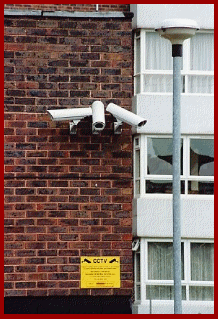| ||||||||||||||||||||||||||||||||
Welcome to the | ||||||||||||||||||||||||||||||||
 | ||||||||||||||||||||||||||||||||
 | ||||||||||||||||||||||||||||||||
All you need to know about lenses, | ||||||||||||||||||||||||||||||||
Next consideration is Lighting Levels; if the camera is equipped with an Electronic Iris function and it's being used under relatively stable lighting, try and stick to using a manual iris lens wherever possible. Why ... well, they're cheaper, optically better corrected (particularly the C mount versions) and there are virtually no moving or electrical parts to cause problems at a later date. If you have to use 'auto iris' lenses, there are essentially two main types; the oldest and most complex are the 'Video amp' or 'video iris', which has an internal PCB to control the iris setting to maintain correct exposure. This is done by measuring the level of highlights in the video signal, and then adjusting the iris to maintain the reading within a certain preset threshold. With the other type, 'Direct Drive', the control circuits are already built into the camera, so basic output voltages are supplied to directly drive the lens iris under camera control. Both types use thin multicore cables to feed the various power, signal or control voltages. The last consideration is Imager Format; historically there have been a number of different sized imagers in use over the years, resulting in a very wide range of lenses suitable for 1', 2/3", 1/2" 1/3" and now 1/4" formats. The golden rule is any lens designed for a larger format camera than the one you intend to use, can be fitted to the camera, but the degree of coverage will be affected. On a 1/3" CCD camera, the 2/3" format 8.5mm lens and 1/3" 8mm lens will give virtually the same degree of coverage, but the larger format optic will be far superior in terms of performance. When used on their respective formats, the 8.5mm is a wide angle, and the 8mm is actually designed to function as a standard lens. | ||||||||||||||||||||||||||||||||
 | ||||||||||||||||||||||||||||||||
IMPORTANT: No material may be reproduced, copied or redistributed from this site, © doktorjon.co.uk 2004 - 2008 Homepage...:...Gateway...:...Technical Gateway....:....Quickfind Index....:....Equipment Directory | ||||||||||||||||||||||||||||||||

